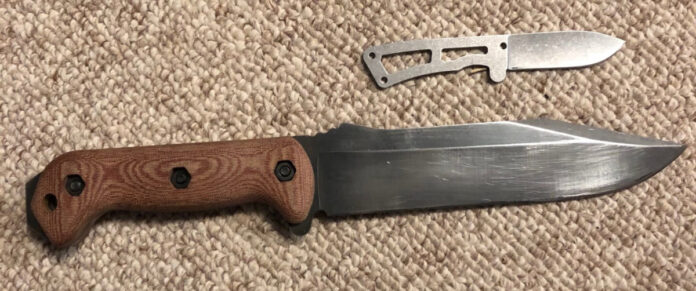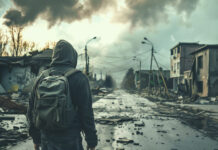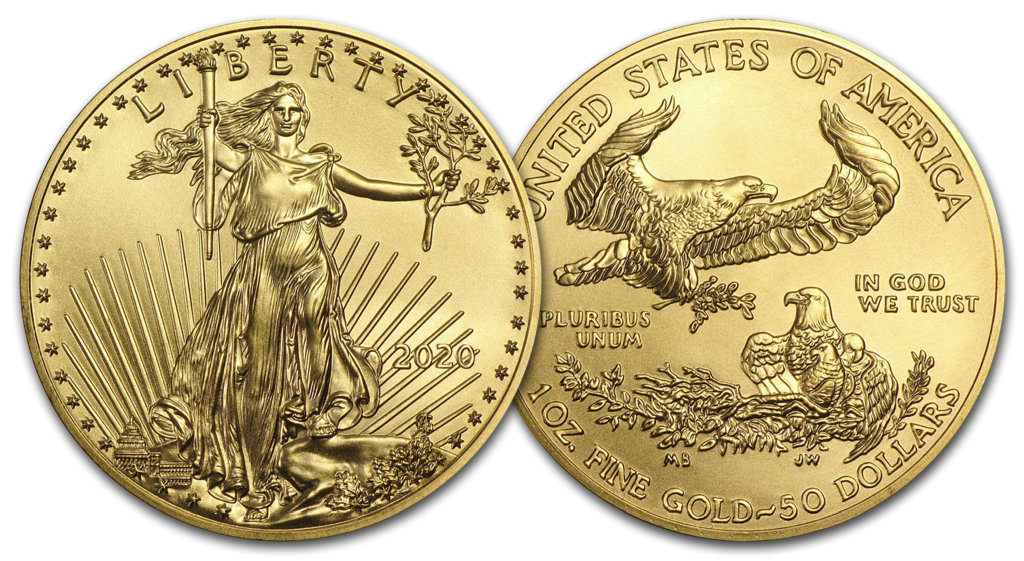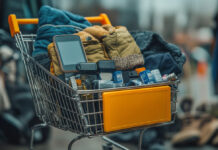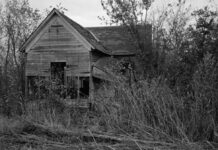The storm we expected has made its way here, but it is far tamer than the Christmas snowstorm. Wet and chilly with the threat of freezing rain rather than bitterly cold and snowing. Nonetheless, a good day to stay indoors.
My big chore today was knife sharpening. I sharpened nine knives using my Lansky diamond hone knife sharpening kit. It’s not fast — I spent more than four hours sharpening knives — but it is effective.
My friend Karl can sharpen a knife with a honing stone and some oil, but I just cannot get them as sharp that way. I watch him and I see people on videos, and it seems so easy for them. Not for me. Karl’s been sharpening knives since childhood, and he used to make $5 or $10 sharpening knives for colleagues. I am envious of his skill, but I get the job done with the Lansky system. I just don’t look as cool doing it.
Among the knives I sharpened were my wife’s kitchen knives. Her cleaver was pretty sharp, but the butcher knife was perhaps the dullest knife I’ve ever seen. I could not even tell what angle it had been sharpened to in the past, so I selected a 20 percent grind and re-ground the edge, using my course stone. Then I continued with the medium grit, followed by the fine grit and a brief hone using an emerald stone. Then I stropped it on a piece of leather. Given the size of the blade, this was a lengthy process, but the blade is beautifully sharp and will cut paper and shave hair. The boning knife and paring knife were in better shape, but I improved them all.
Knives for Preppers
I usually carry two knives. I almost always carry a four-inch liner-lock drop-point that can be opened with one hand. The blade has serrations on the lower inch or so. I know plenty of people who do not like serrations, but I think they are great when the time comes to saw through something really thick. This knife can be used as a cutting tool or for self-defense.
Whenever I am working around the house or know I will be opening boxes, I carry a box cutter that drops open with the touch of a button and uses replaceable razor blades with a few stored in the handle. The entire purpose of this $8 knife is to use it for cutting cardboard instead of dulling the blade on the more expensive folder.
Occasionally, especially when I am working outside or in the field, I strap on a fixed blade knife. I have three I use. A small, hand-forged blade in a leather sheath that is handy for camp tasks and could be used to skin an animal. This knife is discreet and non-threatening. It looks great with a leather belt and a pair of blue jeans. Next up is a six-inch blade with a micarta handle in a kydex sheath. This is a work horse and is great in the field.
Finally, I have a Becker BK7 that I carry in a ballistic nylon sheath. Tucked inside a pocket on the sheath is a small Remora for fine work or for cutting up your dinner. This is the knife I carry when I am trekking in the woods. It’s the knife to use to build a shelter or for chopping and batoning. It’s a workhorse that can also serve as a weapon.
Choose What Works
I have other knives, from Cold Steel, Victorinox, CRKT, Leatherman, and other well-known brands as well as generic knives with no brand. The knife I carry varies by task and dress. For example, I might wear the CRKT M16 if I’m wearing a pair of dress pants and don’t need a heavy knife dragging at my pocket.
Just like you wouldn’t use a paring knife and a butcher’s knife for the same task, I don’t count on one knife to do everything. The four-inch folder is a compromise and it’s almost always on me, but I would be foolish to think there are not some jobs the fixed blades can do better.
Unless I lost it somewhere along the way, and I have lost a few, including an early Spyderco that I carried for years, I still own every knife I’ve bought. The ones I am no longer enamored with go into a bug out bag or a car emergency kit because there are times any knife is better than no knife. The others are in a box, waiting to be used for barter or doled out to friends at the end of the world as we know it.
Get your Spouse and Kids Carrying
I was allowed to start carrying a sheath knife when I turned 10. A Swiss Army knife was added to that not long after. I don’t recall, but I expect I carried the latter to school. I do remember slicing the bejesus out of my thumb while trying to cut the notch in a home-made arrow. It was a painful lesson on keeping your body parts behind the blade.
I am in favor of teaching your children to use knives responsibly. I’m not going to recommend an age; you should know your kids well enough to make the call. This is especially important if you take them outdoors hiking, camping, or hunting. Let them learn first-hand the value of carrying a knife in the field. Teach them how to use it for small tasks, like making cordage or removing the bark on a hiking stick or whittling a stick on which to roast marshmallows. It will be survival training disguised as fun.
When the time comes to give you child a knife, get an inexpensive knife and expect them to lose it. When they do, act disappointed in them and insist that they earn enough money to buy a new one. That will teach them its value better than simply replacing it.
My wife never carried a knife before we married. She would ask to borrow my knife so often that it became obvious she needed one of her own. Same thing with the flashlight. Most of the time, they weigh down her purse, but she’s been known to put them in her pocket while working in the garden or going on a hike.
Knives are one of mankind’s earliest tools. Learn from the many generations that went before you and make a practice of regularly carrying a sharp blade.

